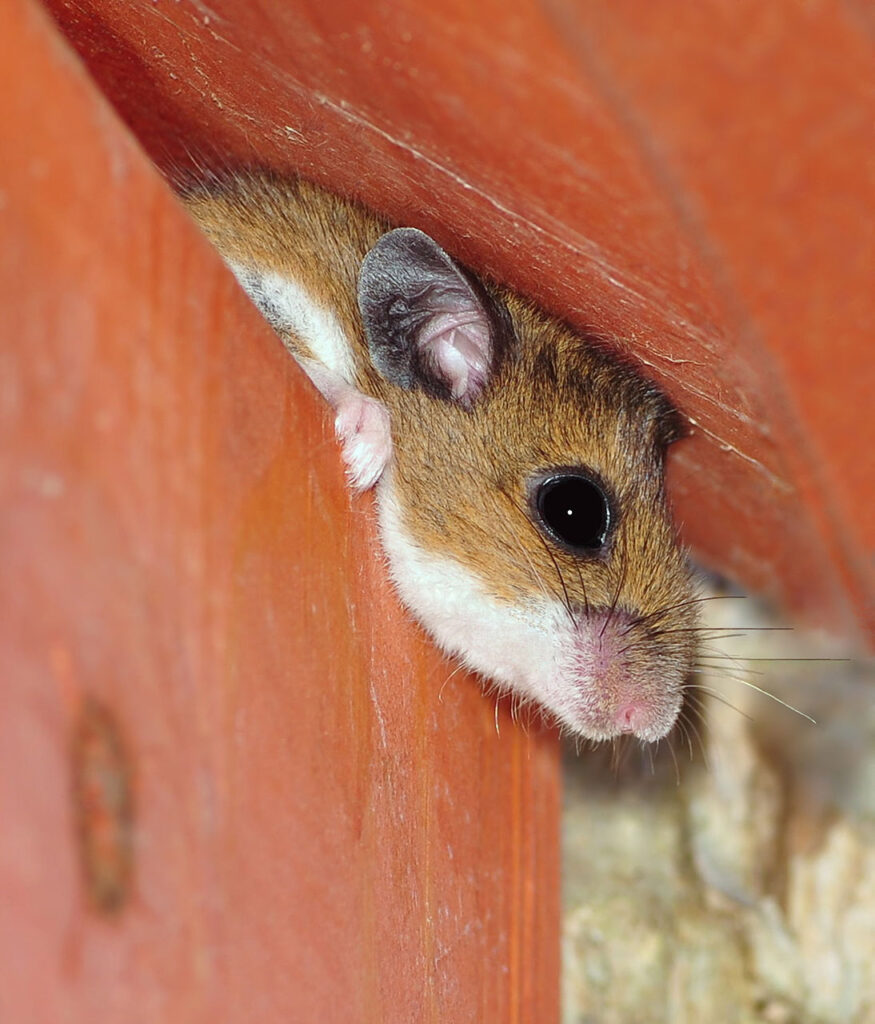Deer Mouse Facts
Deer mice can be found all over North America. These mice won’t live beyond one year in the wild, but they can live up to eight years in captivity. As omnivores, they eat plants, animal matter, insects, seeds, fruits, nuts, and other plant products. Deer mice are also known to eat their own feces from time to time, a behavior called coprophagy. In the fall, these mice will begin to look for food to store it away so they can eat it during the winter months. Deer mice can be dangerous because they are known carriers of Hantavirus.

Deer Mouse Infestation
It is possible for deer mice to get into grain and other stored foods. These items can become contaminated with other pests and fecal matter that transmits diseases. However, they can also help to transport seeds and spores to develop plants and foliage. These mice are carriers of Hantavirus, a virus that can cause a variety of illnesses like Hantavirus Pulmonary Syndrome (HPS). Humans contract this by coming into contact with the fecal matter or urine of deer mice. Those infected will develop flu-like symptoms like a fever, coughing, and headaches. Shortness of breath may also occur. The disease spreads quickly, so early detection is key because it can be fatal if left untreated.
Deer Mouse Damage
You’ll find these mice hiding in hollow logs, in tree holes, or under piles of stones. If they find their way indoors, they prefer dark, warm spaces where they won’t be disturbed like attics, basements, and crawl spaces. You might see them scampering across your yard or kitchen floor. Small nests may be found around the house or yard. These will be made of fur, weeds, seeds, and paper. If you’ve got deer mice, objects around your house may have bite marks or appear to have been gnawed on. Smooth droppings with pointed ends may show up around your home if deer mice are around.
Types of Deer Mice
Deer Mouse Identification
Deer mice can grow anywhere between five to eight inches long. Deer mice have dark fur on their backs and white fur on their legs and undersides. Their coloring is resembles that of a deer.
Deer Mice in the Home & Attic
Deer mice are tiny and are commonly found in kitchen cabinets, under sinks, or in pantries. They prefer to travel the same routes every day, so follow the path of their droppings. In most cases, the deer mouse will try to nest as close to a food source as possible. Deer mice build nests in your walls that consist of loosely bundled fibers such as clothing or paper. You might notice teeth marks on packages, electric cables, or cabinets.
Frequently Asked Questions
What do deer mouse droppings look like?
Deer mice droppings look similar to house mice droppings, they are granular sized with pointy ends. Most likely their droppings will be found along the routes they travel daily. Check near your pets food or in your pantry. Be sure to wear gloves and a mask when cleaning up any droppings.
How do you control a deer mouse infestation?
To keep deer mice out of your home, seal any open cracks, no matter how small. Keeping your lawns mowed and shrubbery trimmed, along with keeping your home neat will reduce the amount of protected places deer mice can nest. Storing your food in plastic containers will keep the mice out of your cereals and oatmeal, as they won’t be able to gnaw through like they can with cardboard boxes. Traps can also be laid, but this should be done by professionals if your problem persists.
What are the benefits of professional deer mouse pest control?
Finding and removing any type of mouse infestation can be challenging, especially if there are numerous nesting sites in the attic, basement, or walls of a business or home.
Expert pest specialists have the educational background, equipment, and skill to control and remove rodents from a property in a safe, efficient way.
If you’re struggling with rodents like deer mice on your property, contact us. Our technicians can remove the critters and help you regain control of your property and sanity.


